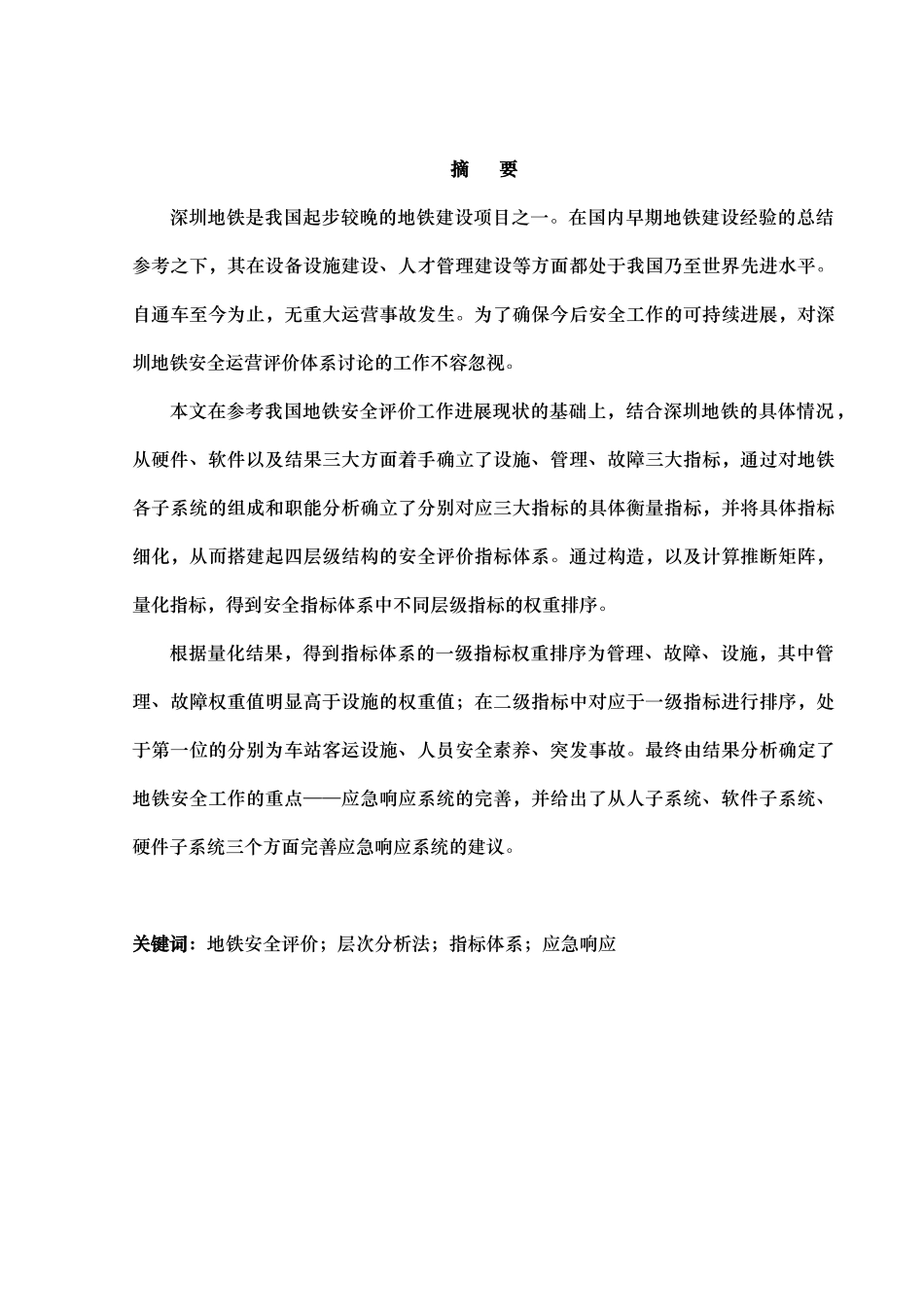摘 要深圳地铁是我国起步较晚的地铁建设项目之一。在国内早期地铁建设经验的总结参考之下,其在设备设施建设、人才管理建设等方面都处于我国乃至世界先进水平。自通车至今为止,无重大运营事故发生。为了确保今后安全工作的可持续进展,对深圳地铁安全运营评价体系讨论的工作不容忽视。本文在参考我国地铁安全评价工作进展现状的基础上,结合深圳地铁的具体情况,从硬件、软件以及结果三大方面着手确立了设施、管理、故障三大指标,通过对地铁各子系统的组成和职能分析确立了分别对应三大指标的具体衡量指标,并将具体指标细化,从而搭建起四层级结构的安全评价指标体系。通过构造,以及计算推断矩阵,量化指标,得到安全指标体系中不同层级指标的权重排序。根据量化结果,得到指标体系的一级指标权重排序为管理、故障、设施,其中管理、故障权重值明显高于设施的权重值;在二级指标中对应于一级指标进行排序,处于第一位的分别为车站客运设施、人员安全素养、突发事故。最终由结果分析确定了地铁安全工作的重点——应急响应系统的完善,并给出了从人子系统、软件子系统、硬件子系统三个方面完善应急响应系统的建议。关键词:地铁安全评价;层次分析法;指标体系;应急响应AbstractShenzhen subway is one of the latest subway construction projects in our country. With the summary and the reference of the construction experience about the domestic subway at earlier stage, the constructions about the equipment, facility, as well as the personnel management have reached the advanced level in our country and even around the world. From coming into use, there has not happened any significant operation accident. In order to ensure the sustainable development of safety task in future, the research to the evaluation system of Shenzhen subway safety operation is inspected.Based on the present situation of safety evaluation about domestic subway and combined with the real situation of Shenzhen subway, this paper sets three main indexes, namely facility, management and fault, in the view of hardware, software and result. Then the 2nd a...


